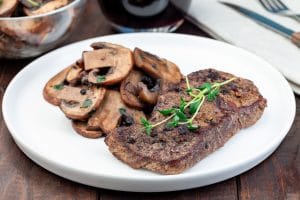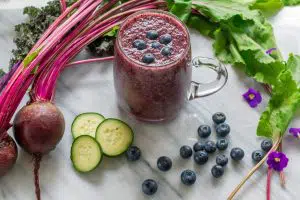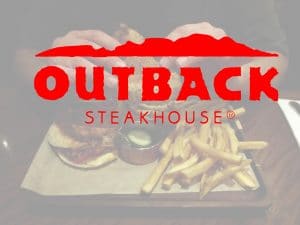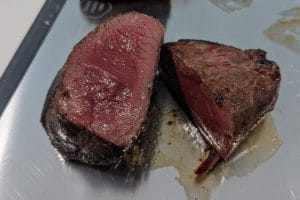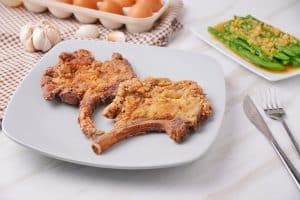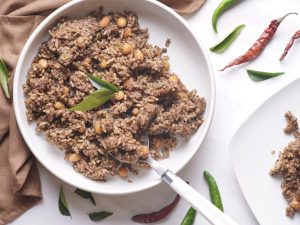What Are The Healthiest Exotic Meats?
Important Note: When you buy through our links, we may earn a commission. As an Amazon Associate we earn from qualifying purchases. Content, pricing, offers and availability are subject to change at any time - more info.
In a world where 88% of all people eat meat, it is shocking to think just how few have tried any exotic variety. Beef, pork, sheep, chicken and turkey aren’t the only meat types. There is a range of healthy, lean protein sources that are significantly healthier to consume that meat laden with saturated fat. Not all exotic meat has the characteristic gamey flavor that most associate. Yak is just one example of a beef, meaty protein that’s free from overly meaty gaminess and there are lots of other taste options to explore. We’ll be taking you through a look at the ten healthiest exotic meats available.
Yak
Farming yaks grants several benefits over beef. Grass-fed yaks typically eat a third of the amount of food that cattle do and only carry 3% fat making them extremely lean. Their protein-rich nutritional profile is high in omega-3’s, mono-unsaturated fats, niacin, B-vitamins, and linoleic acids. This makes yak far more nutritious than other red meat. Yak meat is juicier than beef and tastes great without gaminess, thanks to a unique balance of fatty acids.
The USDA lists the average yak nutritional profile per 3 ounce serving as follows:
| Calories | 132 | Protein | 23.9 g |
| Total Fat | 3.29 g | Monounsaturated Fats | 1.08 g |
| Polyunsaturated Fats | 0.323 g | Trans Fatty Acids | 0.109 g |
| Cholesterol | 79 mg | Calcium | 5.1 mg |
| Iron | 2.81 mg | Magnesium | 21.2 mg |
| Vitamin B-6 | 0.457 ug | Selenium | 31.1 ug |
| Vitamin B-12 | 5.24 ug | Vitamin K | 2.89 ug |
| Vitamin E | 0.196 mg | Folate | 12.8 ug |
Ostrich
Ostrich meat is a tasty, healthy alternative to beef that’s got the highest iron level out of all meat in active human consumption. The amino acids in ostrich are comparable to beef and chicken, while the ultra-low intramuscular fat content translates to very high-quality red meat. Ostrich also has a good polyunsaturated fatty acid to saturated fatty acid ratio that’s well above the World Health Organization healthy average. Don’t expect the taste of poultry as ostrich is red meat akin to venison with a flavor profile that’s midway between a less gamey version of beef and veal.
USDA nutritional profiling lists a single 3 ounce serving of cooked ostrich top loin as the following:
| Calories | 132 | Protein | 23.9 g |
| Total Fat | 3.29 g | Monounsaturated Fats | 1.08 g |
| Polyunsaturated Fats | 0.323 g | Trans Fatty Acids | 0.109 g |
| Cholesterol | 79 mg | Calcium | 5.1 mg |
| Iron | 2.81 mg | Magnesium | 21.2 mg |
| Vitamin B-6 | 0.457 ug | Selenium | 31.1 ug |
| Vitamin B-12 | 5.24 ug | Vitamin K | 2.89 ug |
| Vitamin E | 0.196 mg | Folate | 12.8 ug |
Elk
Elk is an ancient protein source that’s been hunted since prehistoric times. Elk meat carries a dense nutrient profile that’s extremely high in iron and vitamin B12 with near-equal protein to grass-fed beef. Just like most other healthy exotic meats, elk is ultra-lean, containing half the fat of beef at 7% on average. The flavor of elk is similar to deer but far less gamey, rewarding with a taste that’s close to beef and meaty but a little sweeter.
The USDA’s nutritional breakdown of each 3 ounce boneless cooked portion of elk is as follows:
| Calories | 161.7 | Protein | 30.6 g |
| Total Fat | 3.33 g | Monounsaturated Fats | 0.756 g |
| Polyunsaturated Fats | 0.222 g | Trans Fatty Acids. | 0 |
| Cholesterol | 95.4 mg | Calcium | 5.1 mg |
| Iron | 4.23 mg | Magnesium | 23.82 mg |
| Vitamin B-6 | 0.408 ug | Selenium | 14.97 ug |
| Vitamin B-12 | 2.586 ug | Vitamin K | 1.275 ug |
| Vitamin E | 0.639 mg | Folate | 9.36 g |
Bison
The American Buffalo, or bison, are a highly popular protein-rich meat source valued for its affordability and lean, healthy nutritional profile. Bison is higher in protein, iron, and vitamin B-12 than almost all other protein sources. Its low-fat distribution grants a fine marbling to the meat while rewarding with a texture that’s firmer but more tender than beef. The taste of bison is strikingly similar to beef, just with a slightly earthier flavor profile thanks to the high concentration of iron and micronutrients. Don’t mistake this for a “wild” or gamey flavor which is barely detectable at all. Instead, bison is sweeter with a stronger meaty taste that many describe to have a mineral quality.
Here’s a breakdown of boneless Bison’s USDA nutritional profile calculated according to a 3 ounce serving’s yield after cooking :
| Calories | 93.6 | Protein | 18.69 g |
| Total Fat | 1.59 g | Monounsaturated Fats | 0.624 g |
| Polyunsaturated Fats | 0.159 g | Trans Fatty Acids | 0 |
| Cholesterol | 54 mg | Calcium | 5.28 mg |
| Iron | 2.25 mg | Magnesium | 17.16 mg |
| Vitamin B-6 | 0.264 ug | Selenium | 23.37 ug |
| Vitamin B-12 | 1.881 ug | Vitamin K | 0.858 ug |
| Vitamin E | 0.237 mg | Folate | 5.28ug |
Antelope
Antelope are widely farmed across the USA, although the species most commonly introduced to the country are known as Nilgai and are native to India and Nepal. Antelope is also a common protein in Southern Africa. At just 3% fat per antelope, there aren’t meat protein sources that can compare to the leanness of antelope. Antelope is included in the venison grouping and is comparable to deer, elk, and various other game-like wild boar. The taste of antelope is best described as a bolder veal with mild gameness.
The USDA lists the nutritional value of cooked antelope meat per 3 ounce serving as the following breakdown:
| Calories | 147.9 | Protein | 22.05 g |
| Total Fat | 5.97 g | Monounsaturated Fats | 1.818 g |
| Polyunsaturated Fats | 0.624 g | Trans Fatty Acids | 0 |
| Cholesterol | 69.6 mg | Calcium | 19.56 mg |
| Iron | 2.892 mg | Magnesium | 19.56 mg |
| Vitamin B-6 | 0.457 ug | Selenium | 31.1 ug |
| Vitamin B-12 | 4.83 ug | Vitamin K | 2.976 ug |
| Vitamin E | 0.204 mg | Folate | 11.91 ug |
Wild Boar
One of the biggest benefits to wild boar as a lean protein source is just how high in protein it is compared to other sources. At 24.14% protein per serving, it’s almost double pork. Like wild deer, elk, and other sources, wild boar contains a high concentration of essential amino acids. Wild boar has dark red ultra-lean flesh that’s far darker than regular pork. The flavor is strong, sweet, and slightly earthy, which is also described as a nuttiness or mineral quality. There’s a light gamey taste present, but the unique flavor of boar is bold and pervading.
Wild boar calculates to the following nutritional values per three ounce cooked serving, according to the USDA:
| Calories | 136 | Protein | 24.1 g |
| Total Fat | 3.72 g | Monounsaturated Fats | 1.45 g |
| Polyunsaturated Fats | 0.544 g | Trans Fatty Acids | 0 |
| Cholesterol | 65.4 mg | Calcium | 13.6 mg |
| Iron | 0.952 mg | Magnesium | 23 mg |
| Vitamin B-6 | 0.355 ug | Selenium | 11 ug |
| Vitamin B-12 | 0.595 ug | Vitamin K | 1.19 ug |
| Vitamin E | 0.323 mg | Folate | 5.1 ug |
Emu
Ostrich and emu are often confused, but the emu is actually the second-largest bird by height and a different species. Emu is exceptionally high in protein, iron, and vitamin C and low on calories like most healthy exotic meat. It is also exceptionally high in protein, iron, and vitamin C and is low on calories like most healthy exotic meat. You’ll be surprised by the beefy, rich flavor of emu. Just like ostrich, emu meat is reddish with a firm texture that’s close to beef in texture and taste. The high iron concentration gives it a mineral-like taste while remaining close in flavor to a strong veal but without the lingering savory aftertaste.
The USDA lists a 3 ounce serving of ground, pan-broiled emu as:
| Calories | 139 | Protein | 24.1 g |
| Total Fat | 3.95 g | Monounsaturated Fats | 1.66 g |
| Polyunsaturated Fats | 0.575 g | Trans Fatty Acids | 0.13 g |
| Cholesterol | 74 mg | Calcium | 6.8 mg |
| Iron | 4.26 mg | Magnesium | 24.6 mg |
| Vitamin B-6 | 0.708 ug | Selenium | 37 ug |
| Vitamin B-12 | 7.24 ug | Vitamin K | 3.06 ug |
| Vitamin E | 0.204 mg | Folate | 7.65 ug |
Alligator
Alligator meat has much lower fat than beef, pork, and most poultry, averaging 3% fat per serving, and zero cholesterol. This Southern favorite is farmed in many countries, but 90% of US alligator farming occurs in Florida and Louisiana. Many compare the taste of alligator to a midway point between quail or rabbit and chicken. The white flesh is tender and juicy and carries a subtle fishy flavor that can just be detected to the palate. It’s such a complex, rich flavor profile that many purists choose to cook alligator separate from other ingredients while relying on a little seasoning alone.
While alligator meat isn’t listed as a survey food in the USDA database, a basic breakdown of uncooked retail alligator meat with water, sodium phosphates, and salt added is as follows:
| Calories | 82.5 | Protein | 18 g |
| Total Fat | 1.5 g | Monounsaturated Fats | 0 |
| Polyunsaturated Fats | 0 g | Trans Fatty Acids | 0 |
| Cholesterol | 41.55 mg | Calcium | 15.225 mg |
| Iron | 0.373 mg | Magnesium | 0 |
| Vitamin B-6 | 0 | Vitamin A | 18.675 mg |
| Vitamin B-12 | 0 | Vitamin K | 2.89 g |
| Vitamin E | 0 | Folate | 0 |
Kangaroo
All kangaroo meat comes from the wild. Australia sources red kangaroo and grey kangaroo meat predominantly, although four species exist. Set harvest quotas limit commercial harvesting of kangaroo meat while allowing the hunting of large-sized species existing in high numbers only. Kangaroo has remained in high local demand as a rich protein source that’s ultra-lean with 1 to 2% fat since South Australia’s commercial legalization of hunting in 1980. By 1993, kangaroo meat became a commodity across all of Australia. It’s also praised for being high in conjugated linoleic acid.
The USDA has no records on kangaroos publicly available. However, The Australian Food Composition Database lists the nutritional value of a 3 ounce portion of cooked kangaroo loin fillet as the following:
| Calories | 115 | Protein | 26.1 g |
| Total Fat | 1.09 g | Monounsaturated Fats | 0.31 g |
| Polyunsaturated Fats | 0.31 g | Trans Fatty Acids | 15.89 mg |
| Cholesterol | 60 mg | Saturated Fat | 0.32 g |
| Iron | 3.48 mg | Calcium | 3 mg |
| Vitamin B-6 | 0.68 ug | Magnesium | 26 mg |
| Vitamin B-12 | 2.1 ug | Selenium | 17 ug |
| Vitamin E | 1.36 mg | Vitamin K | 2.89 g |
| Folate | 0 |
Venison
Venison is a term that classifies several types of game animal. The name venison can also refer to any cut or the organs. Most of the world’s commercially available venison refers to either antelope, deer, rabbits, hares, wild pigs, goats, and ibex. Wild meat of all its varieties is treasured for its rich, succulent taste and supremely lean composition. All venison has a gamey taste, and each variety ranges from subtle to bold and intense. Flesh is firm in texture, with a marbling generally resembling mutton or aged beef.
USDA evaluation of the average cut of cooked venison lists the following nutritional breakdown for a three ounce portion as follows:
| Calories | 133.2 | Protein | 19.35 g |
| Total Fat | 5.7 g | Monounsaturated Fats | 2.073 g |
| Polyunsaturated Fats | 1.278 g | Trans Fatty Acids | 0 |
| Cholesterol | 50.4 mg | Calcium | 4.14 mg |
| Iron | 2.622 mg | Magnesium | 19.32 mg |
| Vitamin B-6 | 0.483 ug | Selenium | 8.55 ug |
| Vitamin B-12 | 1.173 ug | Vitamin K | 0 ug |
| Vitamin E | 0.654 mg | Folate | 5.52 ug |
Why Is Exotic Meat Healthier Than Beef, Chicken And Pork?
Almost all exotic meat is countless times leaner than beef, chicken, pork and other farmed meat. Wild meat is ultra-lean and super high in protein. Animals in the wild are always active, working muscle tissue constantly which effectively keeps fat at a minimum. Additionally, exotic meat is much higher in iron and B vitamins. Most exotic meats have a healthier fatty-acids profile with a far better polyunsaturated fatty acid to saturated fatty acid ratio than beef or commonly raised livestock. A favorable PUFA/SFA ratio contributes significantly towards lowering one’s risk of cardiovascular disease.
Which Is The Best Exotic Meat?
The best variety of exotic meat will be determined by your dietary needs and the flavor preferred.
Bison, alligator and kangaroo are the leanest but every type of exotic meat listed is very low on fat. Bison, Yak and Ostrich are great if you don’t want a gamey taste. Elk has the most protein but doesn’t beat the other contenders by much. We suggest that you work your way through the list, trying each type of healthy protein for yourself so that you know which types of meat suit which recipes and flavors best.





